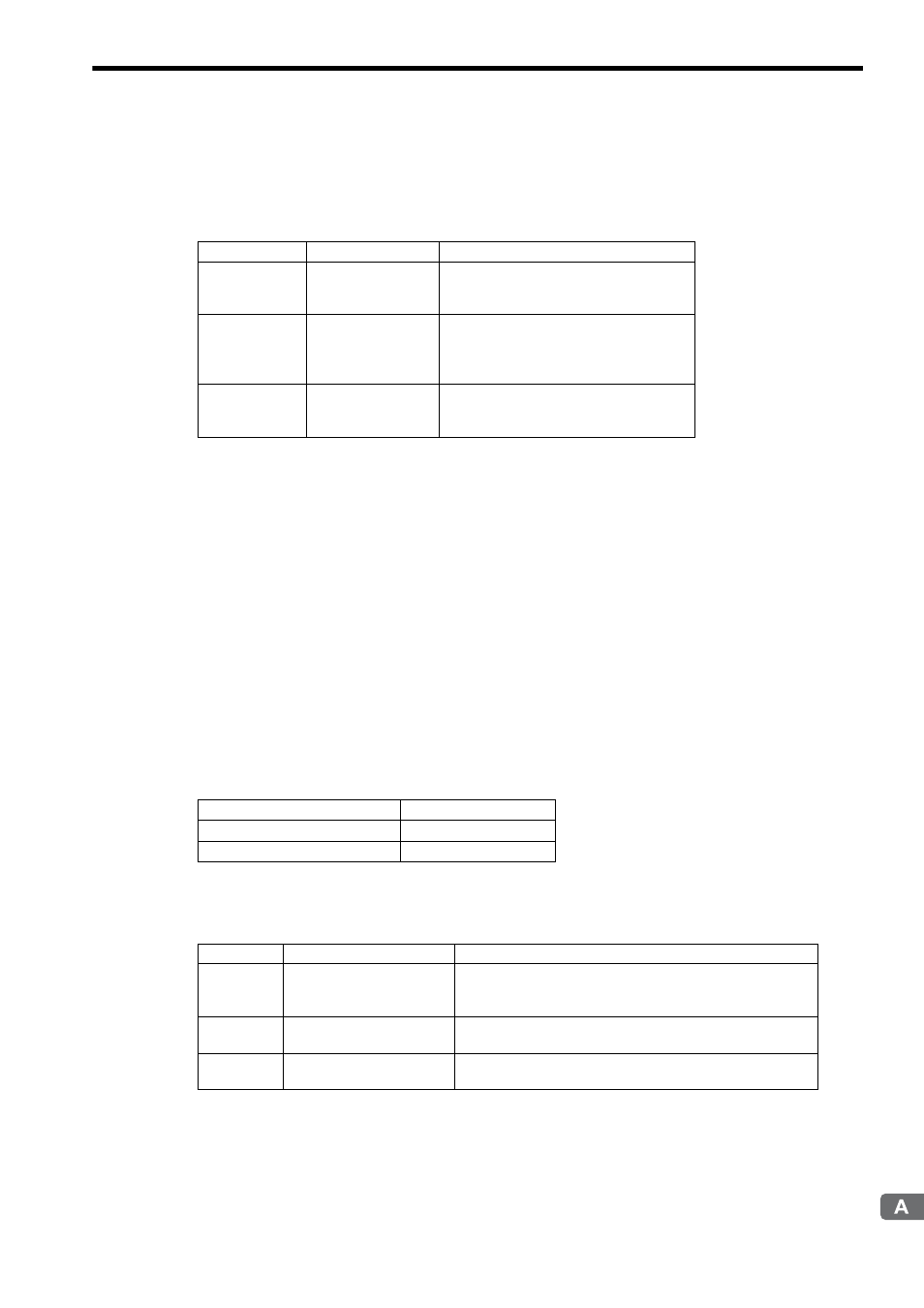A-87, 1 ) input item – Yaskawa MP2300S Basic Module User Manual
Page 409

Appendix G MSG-SND/MSG-RCV Functions (Ethernet)
G.2 Message Receive Function (MSG-RCV)
A-87
Appendices
G.2.2 I/O Item Details of the Message Receive Function
( 1 ) Input Item
The following table indicates the registers available for each input item.
1.
Execute (executes a reception)
Specify a bit to command execution of a message reception.
When Execute turns ON, the message reception is carried out. In order to execute the process, a ladder program
or the like needs to be used to switch the bit ON/OFF.
Note: Keep Execute (executes a reception) until Complete (process completed) or Error (error occurred)
is turned ON. When the command turns ON, the message reception is carried out.
To continuously command the receive execution, make sure to turn Execute (executes a reception)
OFF for one scan or more.
2.
Abort (forcibly ends a reception)
Specify a bit to command a forced abort of a message reception.
When Abort turns ON, the message reception is forcibly terminated. Abort takes precedence over Execute.
In order to execute the forced abort, a ladder program or the like needs to be used to switch the bit ON/OFF.
3.
Dev-Typ (communication device type)
Specify the type of communication device (refer to the table below).
4.
Pro-Typ (communication protocol)
Specify the communication protocol (refer to the table below).
Input Item
I/O Option
Available Register
Execute
Abort
B-VAL
Every bit type register
(except #, C registers),
Same as above with subscript
Dev-typ
Pro-Typ
Cir-No
Ch-No
I-REG
Every integer type register,
Same as above with subscript,
Constant
Param
Address input
Register address
(except #, C registers),
Same as above with subscript
Device
Type Code
Ethernet (218IF)
6
Ethernet (218IFA)
16
Type Code
Communication Protocol
Remarks
1
MEMOBUS
Set the type code to “1” when also transmitting using Extended
MEMOBUS, MELSEC, or MODBUS/TCP protocol. The commu-
nication device will automatically convert the protocol.
2
Non-procedure 1 (per word)
Data is received on a per-word basis in non-procedural communi-
cation. No response is transmitted to the remote.
3
Non-procedure 2 (per byte)
Data is received on a per-byte basis in non-procedural communi-
cation. No response is transmitted to the remote.